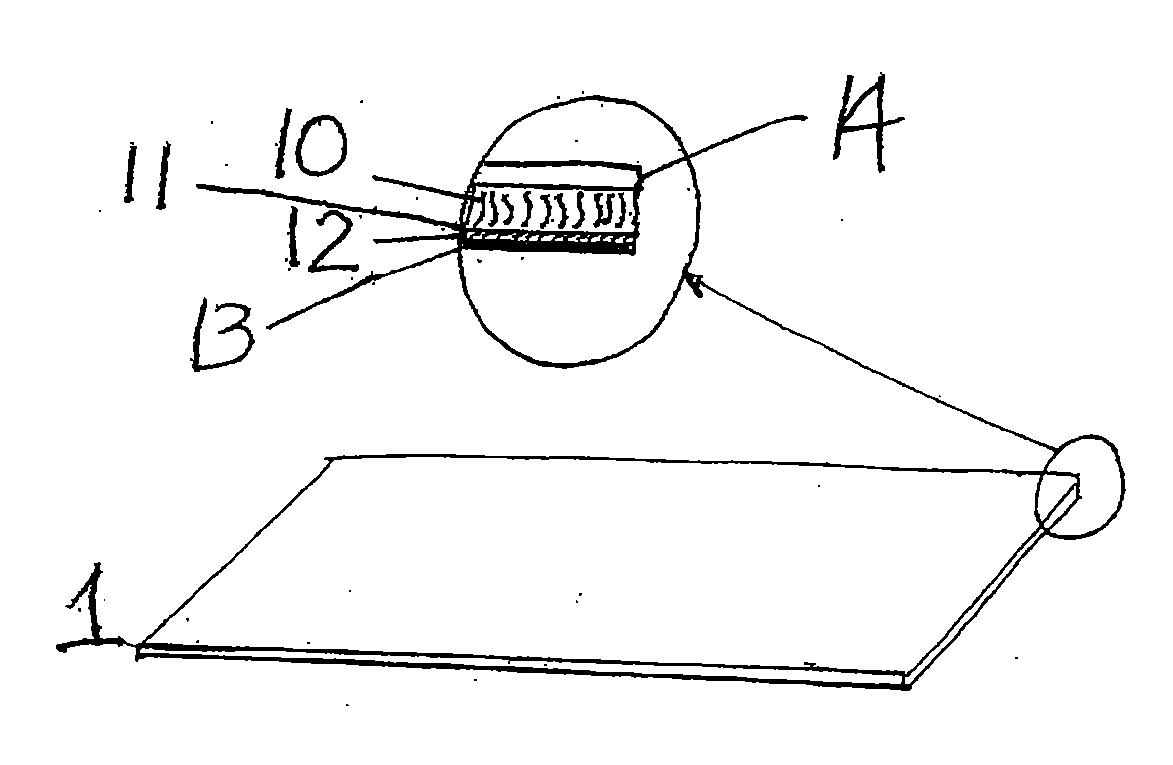Method for applying web material to a molded plastic object
a technology of molded plastic objects and web materials, applied in the field of applying web materials to molded objects, can solve the problems of affecting the substrate package, difficult to prevent wrinkling, deformation, or ripping of thin or flexible materials, and difficult to combine unlike or otherwise incompatible materials to form decorated or ornamented packages
- Summary
- Abstract
- Description
- Claims
- Application Information
AI Technical Summary
Benefits of technology
Problems solved by technology
Method used
Image
Examples
example 1
[0041]A thermoformable, 5-mil polycarbonate sheet having a 30-mil flocked nylon web adhered thereto with 2-mil thick glue on one face and heat-activated adhesive on the opposite face was produced. The nylon web had a protective sheet of 5-mil polycarbonate releasably adhered thereto. The sheet was placed over 24 precisely-formed injection-molded SAN compact lids arranged on a vacuum forming table. The assembled sheet and lids were heated with overhead infrared radiation until the sheet began to form around the lids at a temperature of about 840 F applied for about 2 seconds. Then, vacuum was applied to the sheet, within about 2 seconds after the heating at about 840 F began, to form the sheet and adhere the sheet to the lids. The covered lids then were die-cut from the remainder of the sheet.
PUM
| Property | Measurement | Unit |
|---|---|---|
| Adhesivity | aaaaa | aaaaa |
| Sensitivity | aaaaa | aaaaa |
| Heat | aaaaa | aaaaa |
Abstract
Description
Claims
Application Information
 Login to View More
Login to View More - R&D
- Intellectual Property
- Life Sciences
- Materials
- Tech Scout
- Unparalleled Data Quality
- Higher Quality Content
- 60% Fewer Hallucinations
Browse by: Latest US Patents, China's latest patents, Technical Efficacy Thesaurus, Application Domain, Technology Topic, Popular Technical Reports.
© 2025 PatSnap. All rights reserved.Legal|Privacy policy|Modern Slavery Act Transparency Statement|Sitemap|About US| Contact US: help@patsnap.com


